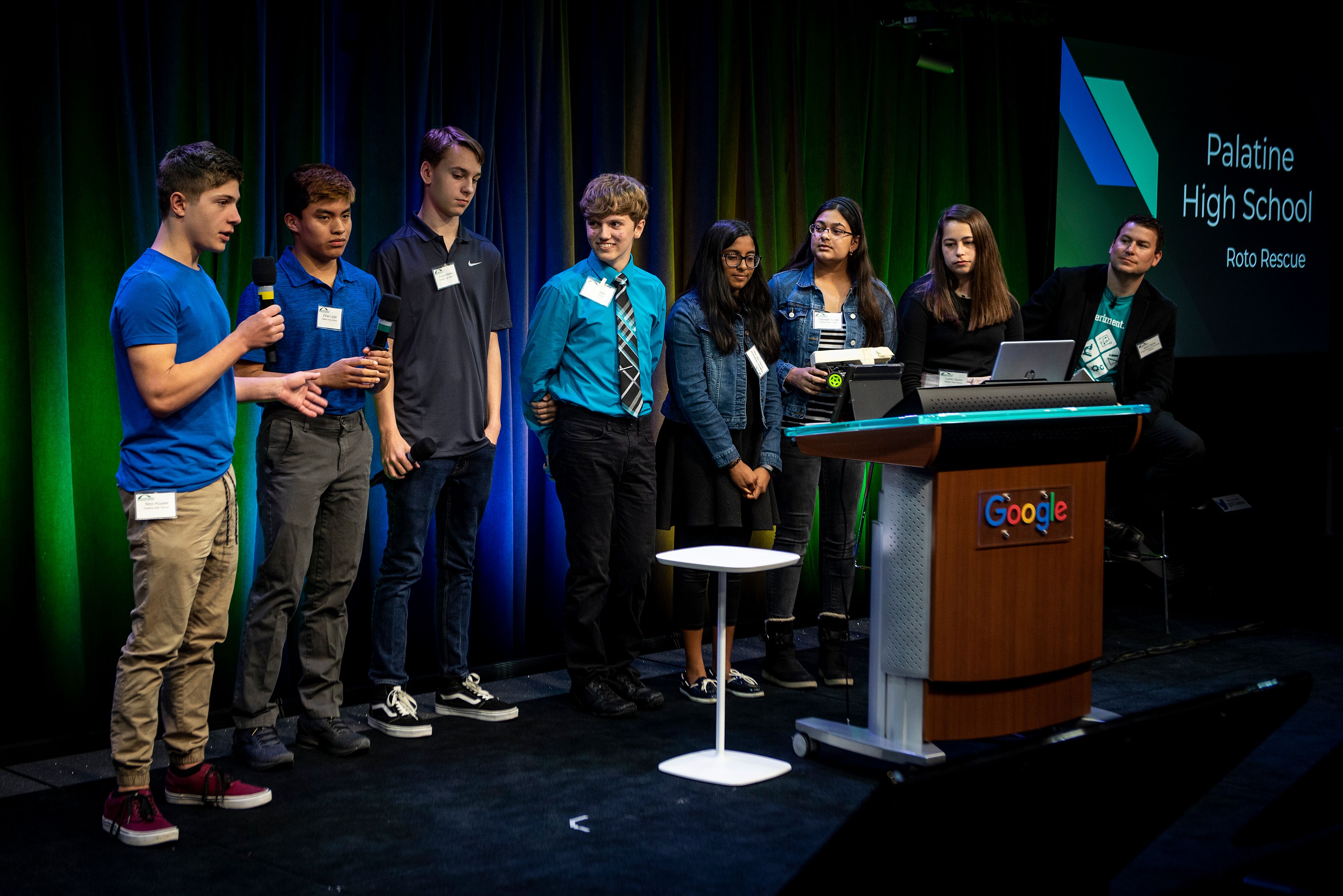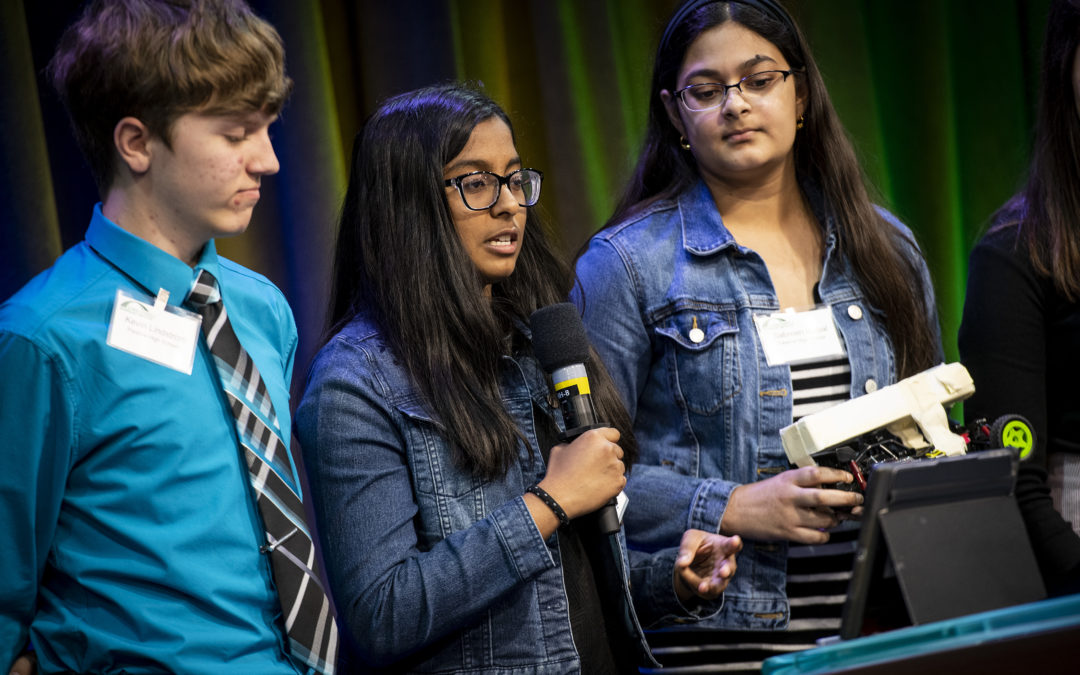By Alex Larson, Applied Technology Teacher, Township High School 211
Problem Based Learning (PBL) is an approach that’s often discussed in STEM education, with curriculum typically based around teacher-developed problems meant to engage students on multiple levels. While this can be effective, nothing compares to the learning and engagement created by real-world problem-based learning.
For the past five years, I have been fortunate to have worked with the Illinois Science & Technology Institute’s (ISTI) STEM Challenge Program, which connects some of the state’s most innovative companies with high school students to work on an authentic business problem or design challenge identified by the company. In those five years my students have worked on food health and safety, transportation systems for difficult landscapes, solar heat shields that would deploy in space, sensing and reporting systems for identification of objects in space, and—this past year—supply delivery systems for remote locations during flooding and other types of disasters.
These challenges are robust, difficult, and extremely complex for students to navigate. They are developed to put the solution out of the students’ reach when they start. It pushes them to grow and stretch their thinking in multiple modalities in order to reach a creative solution. This is where the partnerships and mentoring play a critical role. When professional engineers at Northrop Grumman come in every week to meet with my students, they see the process differently. It’s no longer through the lens of school requirements. Now they look at the challenge through the lens of research, engineering, and problem solving. This shift in students’ perception allows them to drive their learning to places that I could never have imagined.
The engagement with mentors allows students to envision a path forward in STEM. Mentors provide a tangible understanding of what it means to be an engineer, scientist, or researcher at an R&D-driven company. These professions can be ambiguous to young adults, but through ISTI’s STEM Challenges, students gain a clear vision for their problem-solving nature and the pathway to these careers.
This past year, I had a class of freshmen students at Palatine High School take on the STEM Challenge in partnership with Northrop Grumman Corporation. The students were tasked with creating a system that could deploy supplies to areas affected by natural disasters. Throughout the project, students were challenged to develop professional skills, such as scheduling, planning, management, and communication. Over the course of the year, my students showed tremendous progression, developing a solution to the challenge and successfully presenting their work at ISTI’s STEM Challenge Showcase. My freshmen group finished the year having completed a project beyond the scope of anything they had done previously. A project combining elements of physics, math, and finance, while also developing key soft-skills.

The STEM Challenge is an impactful program that leaves a lasting impression on students. Among ex-students I’ve kept in touch with are graduates from the first STEM Challenge five years ago, and each has gone into engineering or scientific research. Each of them also still talks about the incredible experience they had working with their mentors and how pivotal it was for their choices in college and beyond.
Student growth is only one piece of this process. As an educator my own professional growth has taken me to new places and driven me to put learning in the students’ hands. Over the years that we’ve participated in the STEM Challenge, there has been no better professional development for me than working with Northrop Grumman and ISTI to develop these fantastic learning experiences for students.

